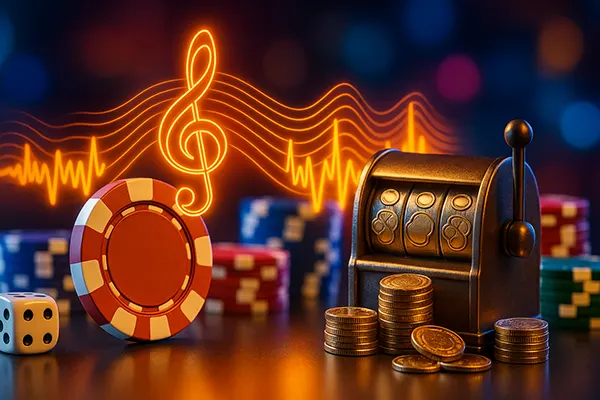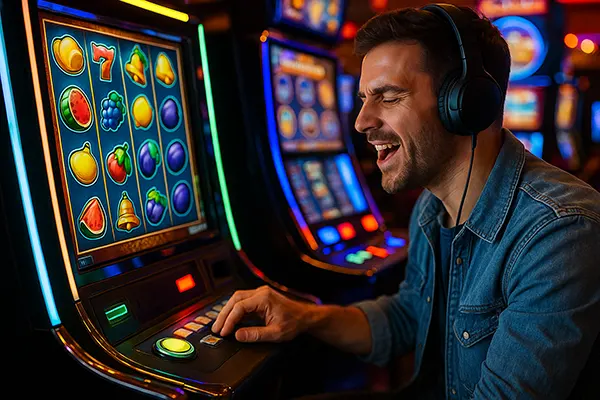Casino Brand Sound Signatures – How Music Becomes a Trademark

Sound has become a defining element in the branding of modern casinos. While visual symbols and logos remain important, audio branding now plays a crucial role in shaping a brand’s emotional identity. Short sound logos, recognisable jingles, and thematic music can instantly evoke the excitement and atmosphere associated with a particular casino. In 2025, sound design has evolved into a strategic tool that strengthens player loyalty and reinforces brand memory across both online and land-based gaming environments.
The Rise of Audio Identity in Casino Branding
In the early days of casino marketing, visuals dominated brand communication. However, as the gaming industry embraced technology and digital platforms, sound emerged as a powerful companion to visual storytelling. Casinos began recognising that an audio signature could communicate their personality in seconds — something a logo or slogan alone could not achieve. This shift led to the birth of professional sound branding in the gaming sector.
Today, leading operators such as Betsson, MGM Resorts, and LeoVegas invest in professional sound composers to craft unique melodies that reflect their brand’s energy and tone. Betsson, for example, uses a crisp, rhythmic audio mark that conveys precision and modernity, while MGM Resorts features orchestral harmonies that evoke luxury and grandeur. Each soundscape reflects the emotions the brand wishes to inspire in its players.
Research from the Audio Branding Academy in 2025 indicates that brands using consistent audio signatures achieve up to 30% higher recognition rates than those relying solely on visuals. This statistic reinforces the strategic importance of sound in an industry built on excitement, emotion, and engagement.
Elements That Define an Effective Sound Logo
Every sound logo must capture the brand’s essence within just a few seconds. Composers working with casino brands focus on tonal clarity, melody progression, and cultural resonance to ensure the sound connects universally. The balance between low and high frequencies often defines the emotional tone — lower notes evoke trust and stability, while higher tones create excitement and anticipation.
Tempo is another critical factor. According to a 2024 report by Nielsen Soundscape, moderate tempos between 100 and 120 beats per minute perform best for casino environments, as they align naturally with human heart rhythms. This tempo range sustains attention and excitement without overwhelming the listener, making it ideal for immersive digital gameplay or promotional content.
Beyond the melody itself, the acoustic texture plays a key role. The inclusion of authentic instruments, such as strings or brass, adds warmth, while electronic tones can emphasise innovation. A successful sound identity blends these textures to create a cohesive emotional message that players instantly recognise.
The Psychology of Sound Recognition in Casinos
Humans process sound faster than visuals, which makes audio cues particularly effective for brand recall. Studies conducted by the University of London between 2023 and 2025 reveal that short, repetitive sound patterns trigger emotional responses 20% faster than visual imagery. For casinos, this speed of recognition can be vital when competing for player attention in crowded digital spaces.
Repetition is fundamental to this process. Casinos incorporate their audio logos in multiple brand touchpoints — from advertising and app notifications to in-game events. Over time, these repeated audio impressions form an emotional association, where the melody alone can evoke trust or anticipation without the need for words or images.
The effect extends beyond memory. Psychologists note that the brain links specific sound frequencies to emotional states such as excitement, focus, or calmness. When applied thoughtfully, sound branding allows casinos to create an environment that encourages engagement while maintaining a sense of control and comfort.
Famous Casino Sound Logos Around the World
Several major casino brands have already established memorable audio identities. LeoVegas, for instance, integrates a signature lion’s roar combined with a short melodic flourish. This combination reinforces its adventurous and dynamic character. MGM Resorts’ symphonic theme, featuring a blend of piano and orchestral strings, captures the grandeur of its land-based properties and online presence alike.
In Europe, Betway’s minimalist percussive tone has become a recognisable mark of professionalism and reliability. The brand invested in multilingual testing to ensure that its sound logo resonates equally across cultural markets, a challenge that many global casinos face in 2025. Similarly, Ninja Casino’s Scandinavian focus led it to incorporate traditional Nordic instruments, subtly tying regional identity with modern digital experience.
These examples demonstrate how sonic branding is not limited to global operators. Even mid-sized casinos now use audio identity to stand out, using distinctive rhythms and tonalities that align with their marketing strategy and target demographics.

Building a Lasting Casino Audio Identity
Creating a successful sound identity involves far more than composing a tune. It begins with defining the brand’s personality — whether it stands for innovation, luxury, or adventure — and translating that into musical form. Professional sound designers work alongside marketing teams to ensure that the final audio signature aligns with both emotional intent and technical functionality across different channels.
Modern tools have revolutionised this process. In 2025, designers rely on AI-assisted analysis to test emotional responses and adjust frequencies that evoke specific moods. For instance, biometric testing allows brands to measure heart rate or pupil dilation while participants listen to prototype melodies. These data-driven methods ensure that the final sound is not just creative but scientifically optimised for emotional impact.
Consistency is equally vital. Once a sound identity is established, it must remain stable across all communication mediums. Casinos that change their audio themes too often risk losing brand recognition. The most effective approach is gradual evolution — refining elements without losing the melody or rhythm that players already associate with the brand.
The Future of Sound Branding in Casinos
Looking ahead, sound branding will continue to evolve as technology advances. With the rise of spatial and 3D audio, casinos are exploring immersive environments where sound changes dynamically based on user movement or actions. This innovation aims to strengthen emotional engagement while maintaining brand coherence across devices.
Additionally, the integration of AI voice synthesis allows casinos to personalise sound experiences for individual users. Imagine a system that adapts background music to a player’s mood or playing style — this concept, already in testing at select European operators, shows the next stage of interactive branding. Sound becomes not only a memory cue but an adaptive element of user experience.
Ultimately, audio identity in the casino industry is no longer an optional feature — it is a strategic necessity. The brands that understand how sound influences perception, trust, and memory will define the future of gaming marketing. As music continues to merge with technology, sound will remain one of the most powerful tools in shaping how players feel and remember a casino.
